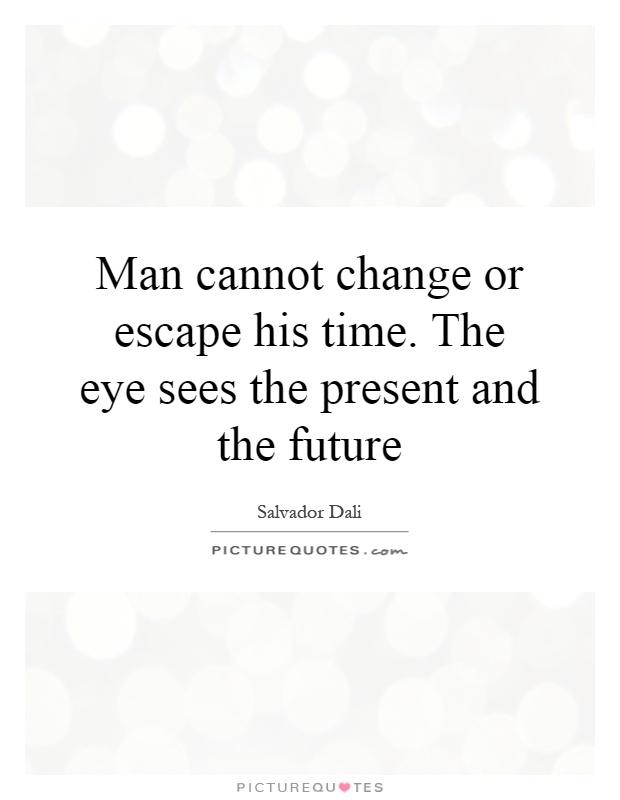Man cannot change or escape his time. The eye sees the present and the future

Man cannot change or escape his time. The eye sees the present and the future
Salvador Dali, the renowned surrealist artist, was a man who seemed to embody the idea that one cannot escape or change their time. Dali's work is often characterized by its dreamlike, fantastical quality, reflecting the tumultuous and uncertain times in which he lived. Born in 1904 in Catalonia, Spain, Dali came of age during a period of great political and social upheaval, including the Spanish Civil War and World War II. These events undoubtedly had a profound impact on Dali's work, influencing his exploration of themes such as time, memory, and the subconscious.Dali's famous painting, "The Persistence of Memory," is perhaps the most iconic representation of his fascination with time. The melting clocks in the painting symbolize the fluidity and impermanence of time, suggesting that man is ultimately powerless to control or escape it. Dali's work often blurs the line between past, present, and future, creating a sense of timelessness that reflects his belief in the cyclical nature of history.












 Friendship Quotes
Friendship Quotes Love Quotes
Love Quotes Life Quotes
Life Quotes Funny Quotes
Funny Quotes Motivational Quotes
Motivational Quotes Inspirational Quotes
Inspirational Quotes